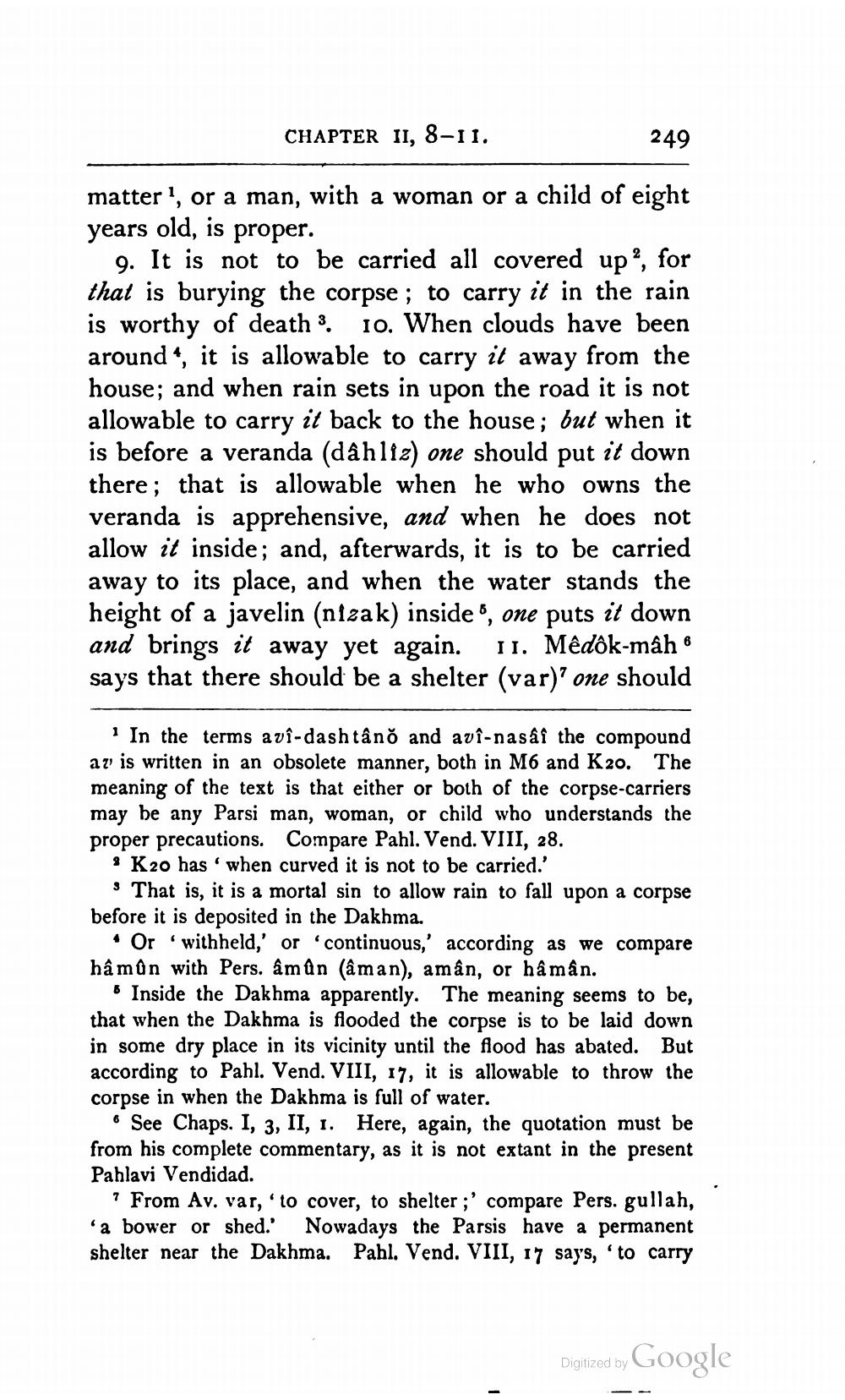________________
CHAPTER II, 8-11.
249
matter', or a man, with a woman or a child of eight years old, is proper.
9. It is not to be carried all covered up?, for that is burying the corpse ; to carry it in the rain is worthy of death . 10. When clouds have been around“, it is allowable to carry it away from the house; and when rain sets in upon the road it is not allowable to carry it back to the house; but when it is before a veranda (dâhliz) one should put it down there; that is allowable when he who owns the veranda is apprehensive, and when he does not allow it inside; and, afterwards, it is to be carried away to its place, and when the water stands the height of a javelin (nizak) inside , one puts it down and brings it away yet again. 11. Mêdôk-mah says that there should be a shelter (var)' one should
1 In the terms avi-dash tân and avi-nasai the compound ar is written in an obsolete manner, both in M6 and K 20. The meaning of the text is that either or both of the corpse-carriers may be any Parsi man, woman, or child who understands the proper precautions. Compare Pahl. Vend. VIII, 28.
K20 has when curved it is not to be carried.'
That is, it is a mortal sin to allow rain to fall upon a corpse before it is deposited in the Dakhma.
• Or withheld,' or 'continuous,' according as we compare hâmûn with Pers. âmûn (âman), amân, or hâmân.
Inside the Dakhma apparently. The meaning seems to be, that when the Dakhma is flooded the corpse is to be laid down in some dry place in its vicinity until the flood has abated. But according to Pahl. Vend. VIII, 17, it is allowable to throw the corpse in when the Dakhma is full of water.
See Chaps. I, 3, II, 1. Here, again, the quotation must be from his complete commentary, as it is not extant in the present Pahlavi Vendidad.
? From Av. var, 'to cover, to shelter ;' compare Pers. gullah, a bower or shed. Nowadays the Parsis have a permanent shelter near the Dakhma. Pahl. Vend. VIII, 17 says, 'to carry
Digitized by Google




